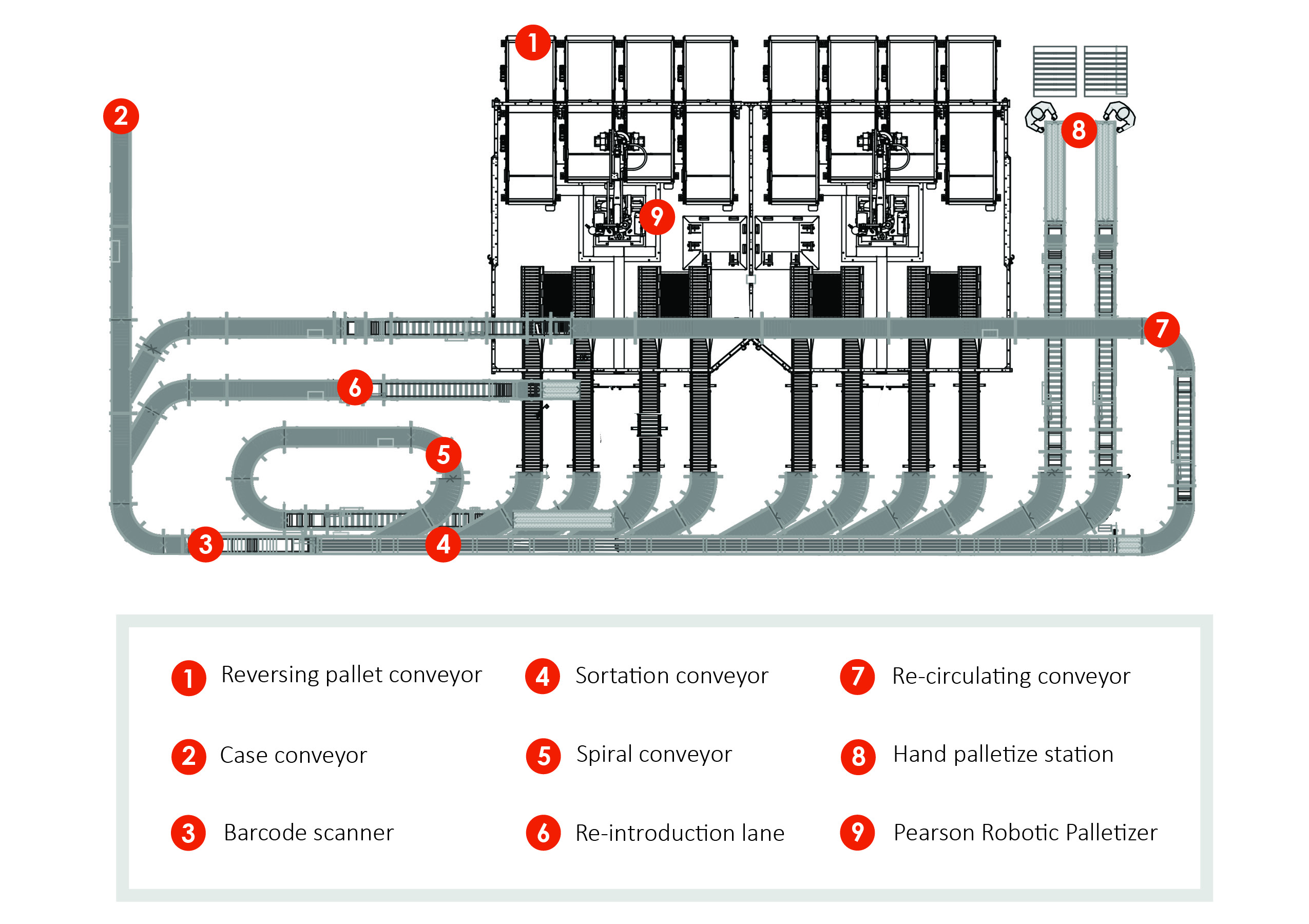Empty pallets are placed on the 1) reversing pallet conveyors manually by an operator and inducted into the cell via pushbutton signal. Cases are received in random order on a 2) common conveyor line. A 3) barcode scanner reads the incoming cases and compares them to the list of SKUs assigned in the system. Cases are transported via a 4) powered roller sortation conveyor where case metering, alignment and diversion to the appropriate palletizing infeed lane occurs. If the barcode is unreadable, unassigned, or randomly selected for quality control, the case is transported to the lower level for manual intervention via a 5) spiral conveyor. Cases with re-printed barcodes or that pass QC are reintroduced into the system at ground level and elevated to merge with the incoming product flow via the 6) re-introduction lane. In the event that an infeed lane is full or there are SKUs that have not been cleared of the previous SKU, cases accumulate on an 7) elevated re-circulating conveyor section before being fed back into the incoming product stream. Small case batches may also route to the 8) hand palletize stations.
The 9) robotic palletizer picks the cases using a vacuum tool and places them on the correct pallet in the corresponding pallet pattern. Full pallets are discharged out of the cell through the light curtains and a beacon will signal an operator that the load is ready for pickup.



